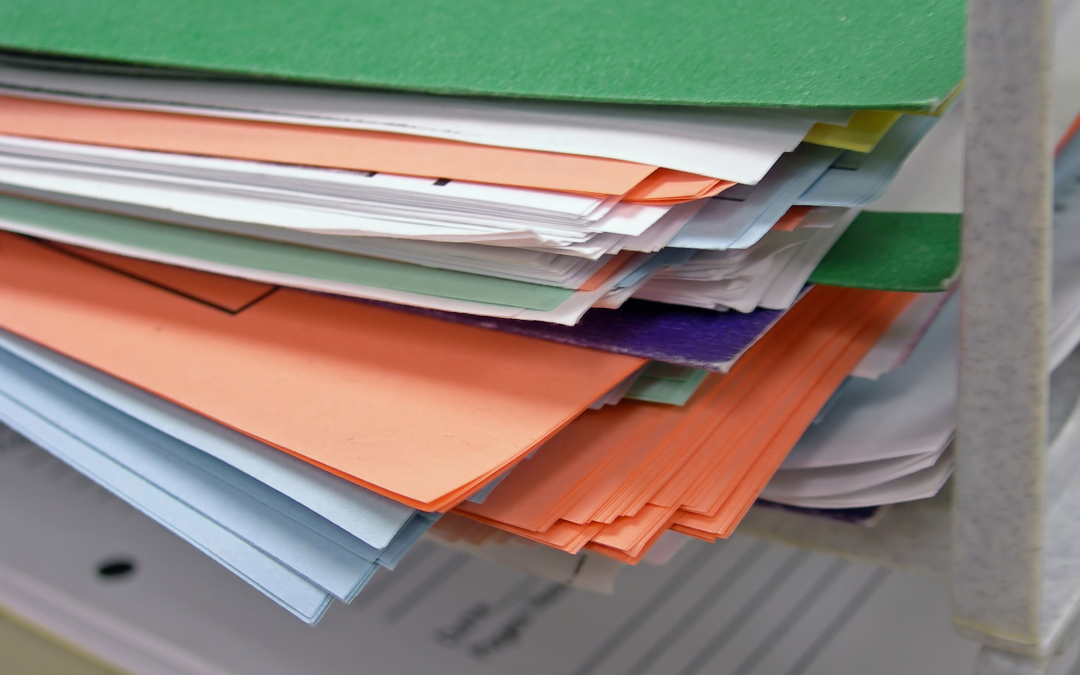It’s sometimes amazing how in this era of tablets, smartphones, and so much technology exactly how much paper we still often have floating around our world. In many ways the ease with which we can print things has lead to creating even more paper in many of our lives, and then there’s the constant in-flux due to the mail!
However, there’s one simple change that you can make immediately to cut down on the paper that’s living in your workspace:
Separate active paper from archive paper.
It’s striking how many times I’ve walked into a client’s office and talked about their paper file organization. The desk and every flat surface is covered with paperwork, files, binders, etc., and the drawers are full too. Usually, my first question is: How often do you use the files in the drawers? A majority of the time the answer is rarely.
Basically, the everyday functionality of the office has been impaired because prime real estate file space is being taken over by files that could be archived.
Generally, we have a collection of files that are active projects or active reference. For instance, if you’re working on performance reviews for your team, then you might have a collection of papers related to completing those evaluations (active project), and you might even need to reference past performance reviews to consider how things have changed (active reference). Therefore, these papers are useful to have on hand for a period of time. However, when an employee leaves and you no longer are completing performance reviews for them, then that file could be archived.
On the other hand, you might have the file from the merger project that happened three years ago in your desk drawer. Now, while there might be completely valid legal reasons why it’s important to keep some of that paperwork (although you might be able to weed some of it out), since it’s no longer something you’re working on frequently, this is a great time to archive it!
Here’s a list of examples of archivable paperwork:
- Bills, bank statements, & financial records from previous years
- Tax Returns from previous years
- Completed projects
- Non-current client files
- Non-current employee files
- Non-current project files
- Items from a settled estate
- Memorabilia
- Anything referenced once or twice a year or less
There’s probably also a bunch of paper that could be weeded out or shredded. Always make sure to check your company’s record retention policy before you eliminate paperwork and potentially talk to a lawyer, accountant, or someone in the general counsel’s office to make sure that you aren’t pitching something important. Here’s a very detailed guide from a group of CPAs which might help answer some of your questions, but your own counsel will know best about your situation. [Clear disclaimer: I am not an accountant or lawyer, so please don’t just take my word for what to pitch.]
Having a low energy afternoon? Then, this might be the perfect time to reclaim your space for your active work, and move the archive paper out! It’s a wonderful low-brainpower activity that gives you immediate benefit and results. Just make sure that it gets ALL the way out of your workspace and doesn’t just become a huge clutter in a corner.
If you look around your workspace right now, what kind of paperwork do you see that’s ready to archive? Share your observations in the comments below. It’s OK; we all have some stuff that’s ready to go. In fact, I might go give my files a weed out right now!



